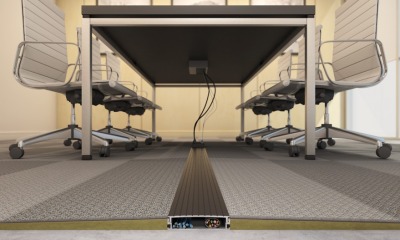Business
The Road towards a Smooth Corporate Move

In the corporate world, good organization and superb communication always work hand in hand in making transitions go more smoothly. And when it comes to corporate moves, these two can do seemingly little things that streamline the entire process. Here are six quick tips specially tailored to help a company make an efficient relocation.

Get hold of the process
When people know what to expect, it often results in better overall performance. Long-distance moves usually take place in the course of days, so it’s recommended that transferees communicate with the moving service in advance to determine the move dates, packing and loading times, as well as the expected delivery. This way they can come up with a flexible plan based entirely on the move details without any guessing.
Organize the parking
Securing a safe and legal place to park the moving equipment and the vehicles is paramount in any move, especially since in a corporate move, the equipment will be parked at the site for at least two nights. While permission usually isn’t needed when parking on private property, municipal homeowners’ associations, cities and apartment management may ask for a permit for communal parking lots and public streets. Run the possibilities with the moving company to see who is responsible for getting permissions and permits.
Understand all necessary information
Accurate details are of the utmost importance if the move is expected to go smoothly. The company you hire to move your belongings needs to know details like the move date, origin and destination addresses, closing dates and travel plans. With this information, corporate movers can coordinate their actions with the transferees’ schedule, and also secure accurate delivery. If you miss to provide any details, such as the destination address, make sure to contact the movers as soon as it becomes available.

Transfer utilities
As already mentioned, a hassle-free move is a matter of getting all the details right, one of them being dealing with utilities prior to the moving day, lest you find the lights out and the phone dead halfway across the country. Gas, electricity, phone, and cable companies each have their own lead-time for disconnect/connect notifications; a rule of a thumb is to contact their customer services at least two weeks prior to the move. Some providers even have protocols which allow you to manage your new gas connection online which both cuts the costs and saves your time.
Appoint a move foreman
In most cases, someone will need to be present to sign for the moving equipment when it’s delivered. This person will also need to be available during packing and loading. From time to time, the moving service might need to ask questions or consult the transferee on situations that arise. This moving foreman also needs to act as a liaison between the movers and the management, with accurate contact information at hand.
Plan to travel a day after
As you make the arrangements to transfer the manpower to their new offices, it’s recommended that the first day of travel is planned for the day after the move. This way, you reduce the stress and give a lot of flexibility for unforeseen things that may arise while moving. Make sure the reservations are made ahead of time for things such as flights, rental cars, hotels, etc. In some cases, even a storage might be useful while accommodations are being provided.
With each of these six tips, there is one golden rule – contact the movers if any details change or situation emerges. With prompt communication, the moving company can work through the changes and adjust to the new conditions without much delay.
-

 Tech11 years ago
Tech11 years agoCreating An e-Commerce Website
-

 Tech11 years ago
Tech11 years agoDesign Template Guidelines For Mobile Apps
-

 Business6 years ago
Business6 years agoWhat Is AdsSupply? A Comprehensive Review
-

 Business10 years ago
Business10 years agoThe Key Types Of Brochure Printing Services
-

 Tech8 years ago
Tech8 years agoWhen To Send Your Bulk Messages?
-

 Tech5 years ago
Tech5 years ago5 Link Building Strategies You Can Apply For Local SEO
-

 Law5 years ago
Law5 years agoHow Can A Divorce Lawyer Help You Get Through Divorce?
-

 Home Improvement6 years ago
Home Improvement6 years agoHоw tо Kеер Antѕ Out оf Yоur Kitсhеn







































